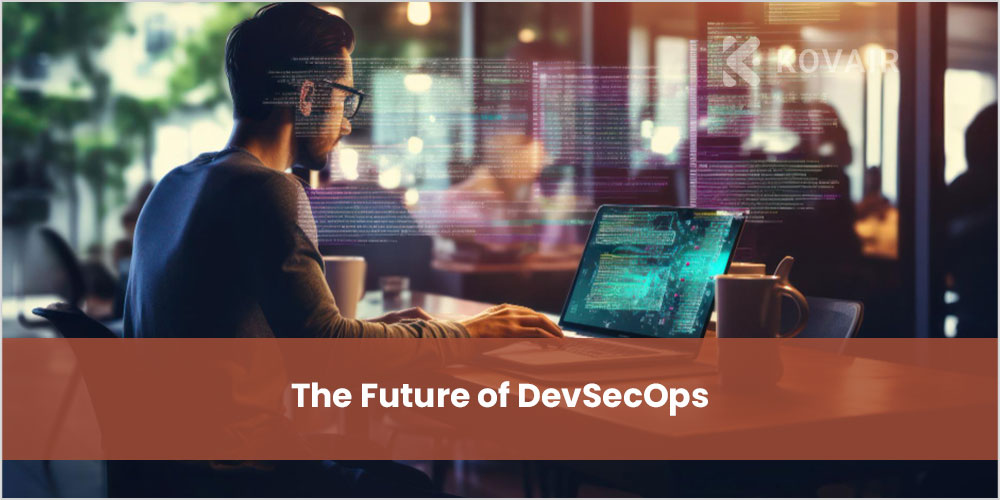
DevSecOps, the practice of integrating security protocols into DevOps workflows, has become increasingly important in recent years. As more DevOps service providers adopt agile software development practices and continuous delivery models, security can no longer be an afterthought. DevSecOps seeks to shift security “to the left” and ensure it is considered from the very beginning of the development lifecycle.
Many experts believe DevSecOps will only grow in adoption and importance in the coming years. Here are some key ways DevSecOps may evolve in the future:
Greater Automation of Security Processes
Manual security reviews and pen testing slow down release cycles. More teams will invest in automation tools to scan infrastructure-as-code, catch code vulnerabilities early, and assist with policy enforcement and compliance checks. The goal is to help developers build more securely without impeding velocity. Machine learning has great potential to improve the accuracy of automated app and API scanning.
Bolstered Cloud Security Postures
As cloud adoption accelerates, managing security configurations and policies across complex, dynamic environments is an increasing challenge. More robust cloud security tools that can auto-detect misconfigurations, model IAM roles, suggest policy changes and report risk scores will emerge. Embedding “security as code” practices into CI/CD pipelines will also grow.
Shift Left on Security Data/Analytics
Many security analytics today happen too late after a breach occurs. Teams will increasingly mine security signals from development tools and pipelines for early warning signs. This allows them to identify vulnerable code, misconfigured environments, suspicious user behavior, and more at Dev speed vs. Ops speed. This means issues can be flagged and remediated sooner.
Unified Security Integration & Orchestration
Disjointed piecemeal security tools that lack integration result in gaps and inefficiencies. Expect tighter integration between suites for threat intelligence, cloud security posture management, application security testing, infrastructure security, identity management, incident response, and more. Standards for interoperability and data sharing will emerge, aided by common APIs. This will allow more unified visibility, reporting, and orchestration.
Cultural Evolution, Learning Emphasis
Enforcing security compliance through audits/penalties can foster resentment between Dev and Security. Organizations will realize “smart security” that enables innovation and balances productivity with protection, which requires a DevSecOps culture centered on shared responsibility, education, collaboration, and user experience design thinking. Security becomes everyone’s job.
The future of DevSecOps points towards more automation, integration of capabilities, and cultural collaboration to make security intrinsic from the start of the development lifecycle. The goal is frictionless and “failsafe” security fully built into DevOps velocity – an ambitious aim that will demand great innovation and evolution of practices.
Key Capabilities of Future DevSecOps Tools
As DevOps practices mature and application delivery accelerates, security cannot be an afterthought dumped at the end of the pipeline. Organizations need a new generation of automated DevSecOps tools woven seamlessly into developer workflows. These tools will scan infrastructure-as-code templates, catch code vulnerabilities early through static and dynamic analysis, monitor cloud environments, enforce security policies and compliance as code, and provide advanced analytics for threat detection.
In particular, machine learning has huge potential to eliminate false positives and reduce noise for developers trying to remediate security issues. ML algorithms trained on large sets of historical data will automatically surface the most pertinent and exploitable risks for rapid prioritization. Analytics engines will also identify hidden attack patterns and anomalous user behavior by processing numerous security signals – events, logs, network traffic metadata, and more. This allows unknown threats to be detected faster.
On the policy side, teams will encode organizational security standards, regulatory controls, and best practices directly into pipelines as codified rules. This ensures adherence is validated on every code change through automated enforcement. Security shifts left into the CI/CD process. Testing tools also integrate with issue trackers to efficiently hand off results so developers can take action. The end goal is frictionless remediation embedded into native workflows – not disruptive gatekeeping.
As barriers between functional domains dissolve, unified security suites will emerge, covering various capabilities like cloud posture management, application security testing, runtime protection, identity and access management, and more. Vendors specialize across the spectrum today, but open standards for APIs and data formats will enable better interoperability between point solutions. This allows improved consolidation of reporting, policies, and orchestration under centralized platforms. Below is the table representation of the capability of future DevSecOps Tools:
| Capability | Description | Benefits |
| Infrastructure-as-Code Scanning | Automatically scan IaC templates for security misconfigurations | Catch issues early before provisioning |
| Static & Dynamic App Scanning | Analyze app codebases and running apps for vulnerabilities | Identify risks faster with less false positives via ML |
| Cloud Posture Management | Continuously monitor cloud environments for risks | Reduce attack surface area from misconfigurations |
| Policy-as-Code Enforcement | Encode compliance rules and security best practices as code | Automated validation of standards/regulations |
| Security Analytics | Analyze logs, events, and network traffic for anomalies | Faster threat detection with advanced analytics |
Key Cultural Pillars of Mature DevSecOps Programs
Technology capabilities are only one aspect of mature DevSecOps execution. The human elements are equally, if not more, important for engraining security practices deeply into high-performance agile teams. This requires instilling a shared mindset of collective responsibility where security is everyone’s job, not just the domain of a separate department.
Promoting broad security education across the organizational stack is essential and tailored to various roles. Developers should learn secure coding techniques, ops engineers need cloud security training, testers require app testing tools skills, and so on. Leadership establishes a clear vision of tradeoff decisions and risk appetite. Blameless retrospectives facilitate continuous learning by transparently assessing past incidents without punishment.
The inclusion of security experts in Scrums, stand-ups, and other collaborative rituals promotes trust through partnership. Issues can be tackled jointly in real-time instead of tossed over the wall between silos. High bandwidth communication channels like Slack enable fluid requirements gathering and feedback.
User-experience design thinking ensures security solutions consider developer productivity and minimize disruption. If pipelines fail fast and validate quickly with clear and actionable results, there is less friction to fix problems early. Gamification through leaderboards and rewards for secure coding instills friendly competition.
Above all, the maturation must be data-driven. Security KPIs should tie quantitatively to business success metrics. Tracking velocity of remediation, reduction of severity scores, or volumes of policy exceptions over sprints gives objective insight on progress to inform planning. Measurements ground decisions in hard evidence vs subjective perceptions between teams.
| Pillar | Practices | Outcomes |
| Shared Responsibility | Security training for all teams; promote ownership | Intrinsic security mindset; less risky code |
| Collaborative Workflows | Include security in agile ceremonies; feedback loops | More secure features; informed tradeoff decisions |
| Emphasis on Learning | Enable experimentation; conduct blameless post-mortems | Culture focused on continuous improvement |
| User-Focused Thinking | Consider developer experience; minimize friction | Increased adoption of secure methods & tools |
| Metrics-Driven | Measure security KPIs; track progress over time | Data-backed decisions on program health |
Final Thought
As DevOps revolutionizes application development by emphasizing speed, security must integrate innovatively to avoid being an afterthought that allows vulnerabilities to slip through the cracks. The future of DevSecOps is bright through advances in automation, analytics, and culture that enable security to shift far left while sustaining velocity. Cross-functional ownership, transparency, accountability, and collaboration will catalyze this evolution. However, the journey requires an executive commitment to continuity through ups and downs. By persevering together, organizations can transform security from a perceived inhibitor into a pillar that fosters innovation.


